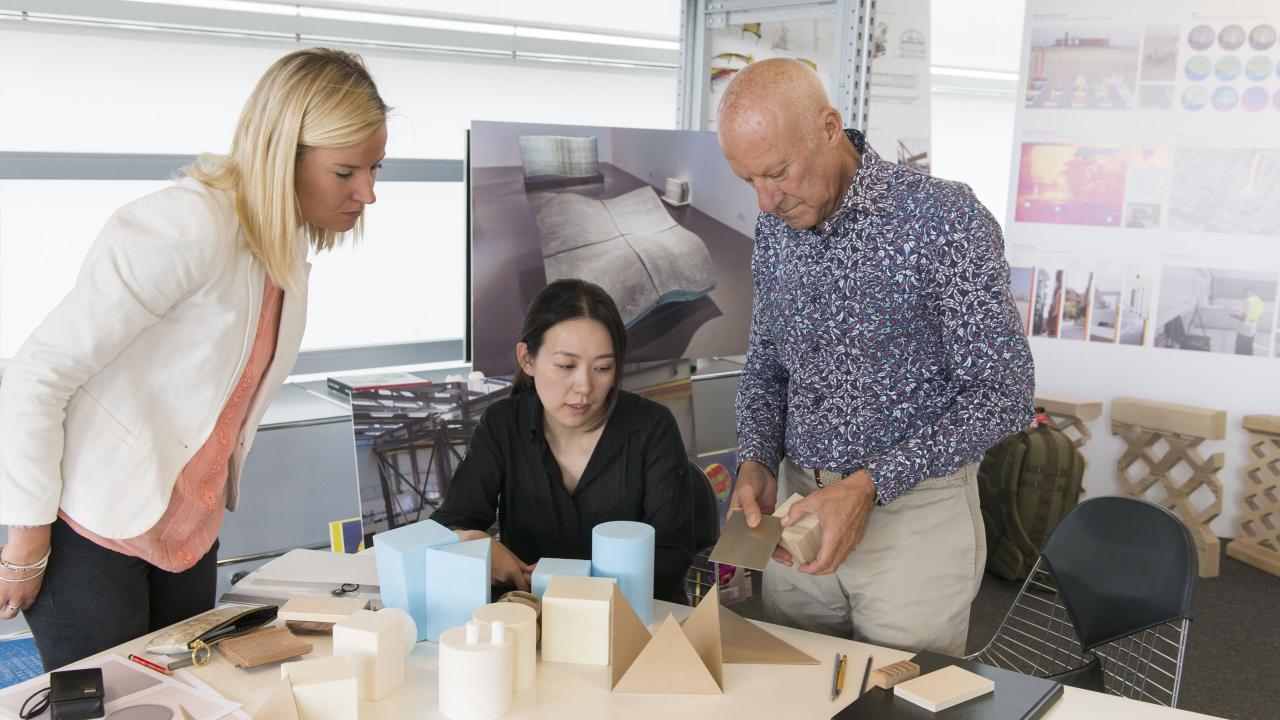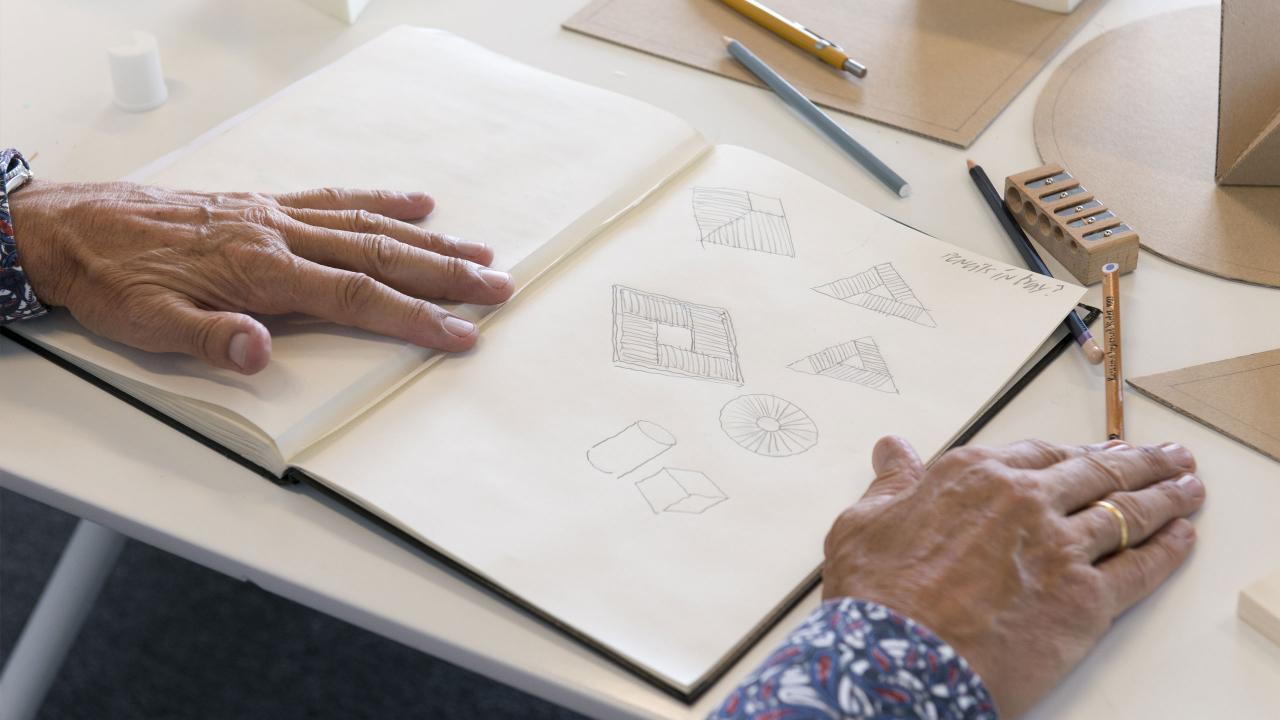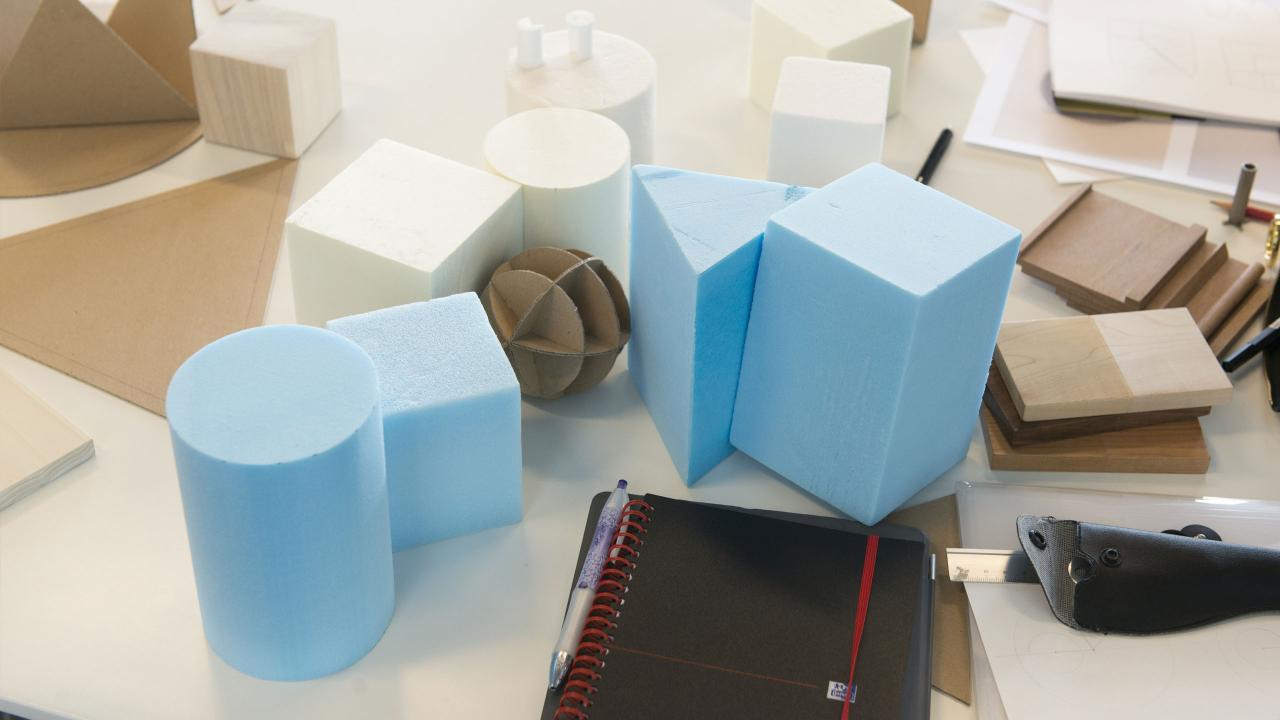Norie Matsumoto’s first ideas for accommodating the three sharpeners involved having a three-branched object a bit like a spigot. But she quickly evolved the much simpler forms – a cube, a pyramid, a cylinder and a sphere, each to have the three openings (other than the cube which has four), going in from different directions. Each had a tray to sit on as well, large enough to hold a sizeable collection of pencils. The choice of timber was critical. Matsumoto took a range of samples to show Norman Foster, and he immediately plumped for American tulipwood. It is often seen as a low quality timber but Foster loved the colour variation; ‘Of all the samples that we examined it was uniquely pale and the grain had an almost marble like quality’ he said, delighted also to have chosen something that is abundant and inexpensive.



